Search Result
Results for "
mitochondrial respiration
" in MedChemExpress (MCE) Product Catalog:
7
Isotope-Labeled Compounds
| Cat. No. |
Product Name |
Target |
Research Areas |
Chemical Structure |
-
- HY-131453A
-
|
|
Mitochondrial Metabolism
|
Metabolic Disease
|
|
Mitochondrial respiration-IN-1 hydrobromide (compound 49) is a potent mitochondrial inhibitor (IC50=8.8 mg/mL) extracted from patent US20110301180A1, compound 49. Mitochondrial respiration-IN-1 hydrobromide significantly reduces mitochondrial respiration in platelets .
|
-
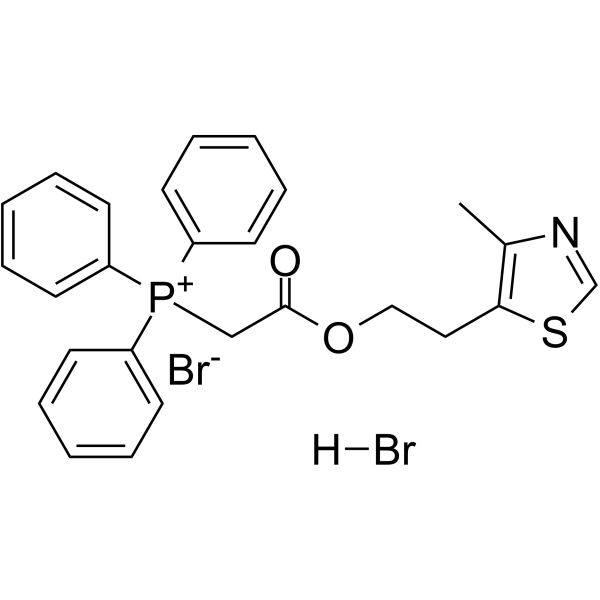
-
- HY-152202
-
|
|
Mitochondrial Metabolism
|
Cancer
|
|
Mitochondrial respiration-IN-3 is the fluorine derivative of Dalfopristin (HY-A0241). Mitochondrial respiration-IN-3 has cell membrane-permeable. Mitochondrial respiration-IN-3 can inhibit mitochondrial translation of glioblastoma stem cells. Mitochondrial respiration-IN-3 can be used in research of cancer .
|
-
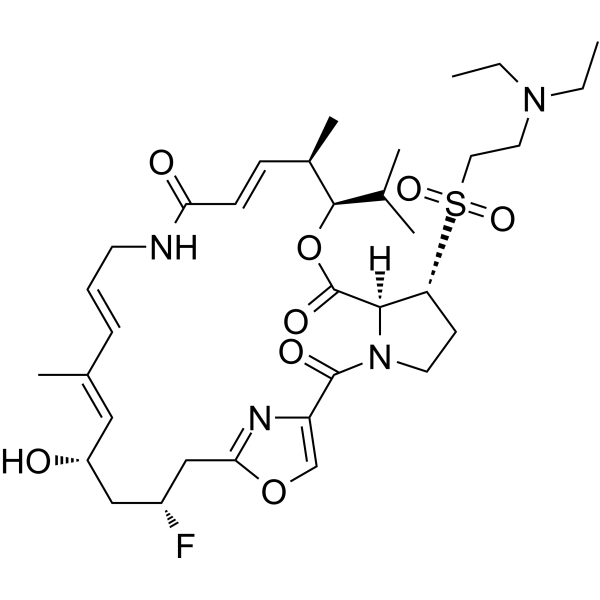
-
- HY-161267
-
-
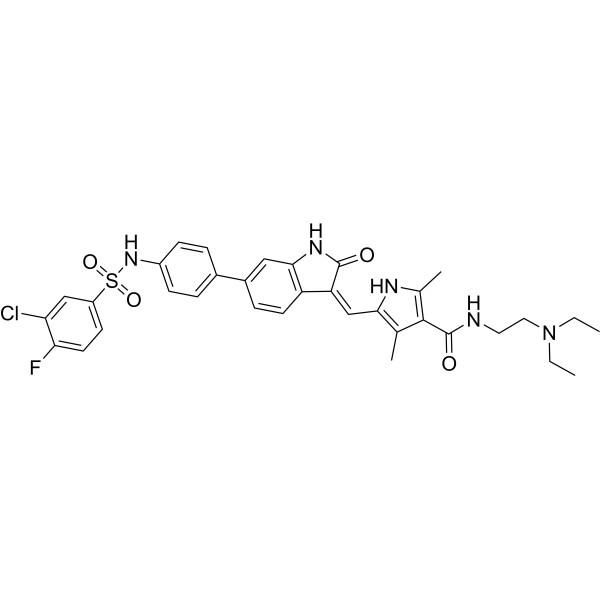
-
- HY-152203
-
|
|
Others
|
Cancer
|
|
Mitochondrial respiration-IN-2 is the fluorine derivative of Virginiamycin M1 (HY-N6686). Mitochondrial respiration-IN-2 can inhibit mitochondrial translation of glioblastoma stem cells .
|
-
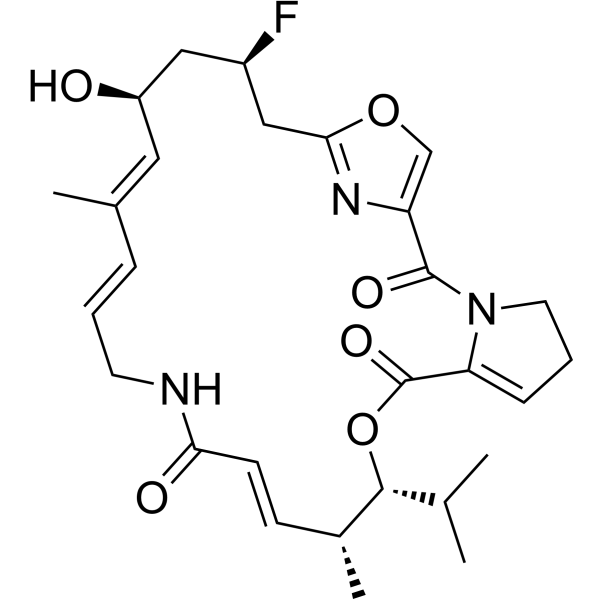
-
- HY-106472
-
|
EMD 26644
|
Bacterial
|
Infection
|
|
Tioxaprofen is a new anti-mycotic drug against Trichophyton mentagrophytes and T. rubrum, and is a potent uncoupling agent of mitochondrial respiration .
|
-
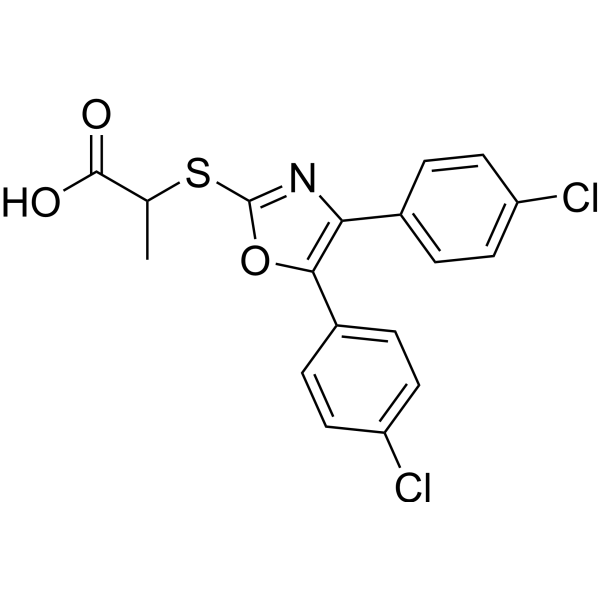
-
- HY-136355
-
|
|
Fungal
|
Infection
|
|
Picoxystrobin is a primary strobilurin fungicide that is widely applied for plant disease control. Picoxystrobin inhibits mitochondrial respiration via blocking electron transfer at the Qo center of cytochrome b and c1 .
|
-
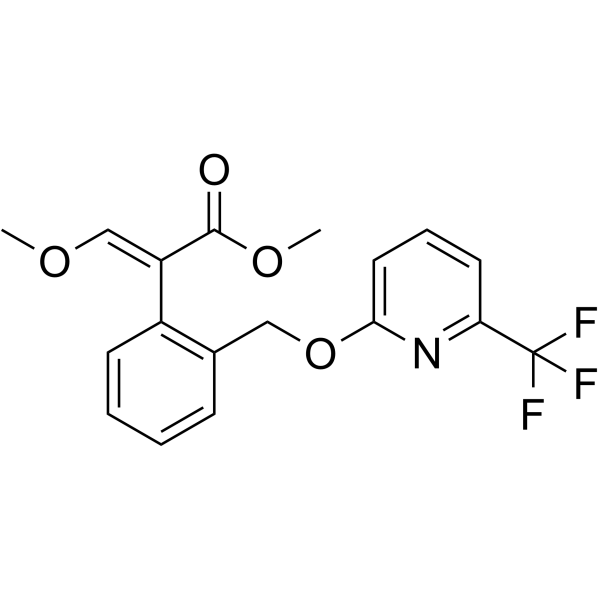
-
- HY-133859
-
|
|
Mitochondrial Metabolism
|
Metabolic Disease
|
|
M084 is a benzimidazole derivative. M084 inhibits the mitochondrial respiration, activate mitochondrial unfolded protein response and AMPK, recruites SIR-2.1 and SKN-1, and finally through the transcription factor DAF-16, delays the aging process of C. elegans .
|
-
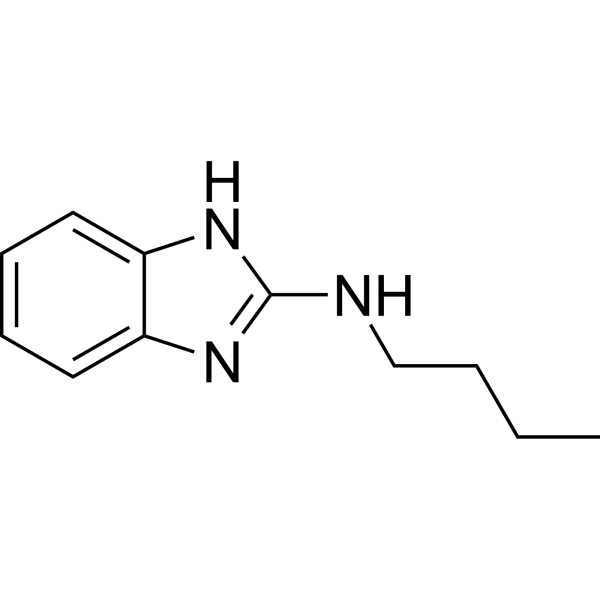
-
- HY-113607
-
|
Bullatacin
|
Mitochondrial Metabolism
Parasite
|
Infection
Cancer
|
|
Asimicin (Bullatacin) is antitumor acetogenin that can be isolated from the bark and seeds of the pawpaw tree, Asimina trilobal Dunal. Asimicin inhibits mitochondrial respiration through the inhibition of complex I. Asimicin shows toxicity to Aphis gossypii, mosquito larvae and mammalian .
|
-
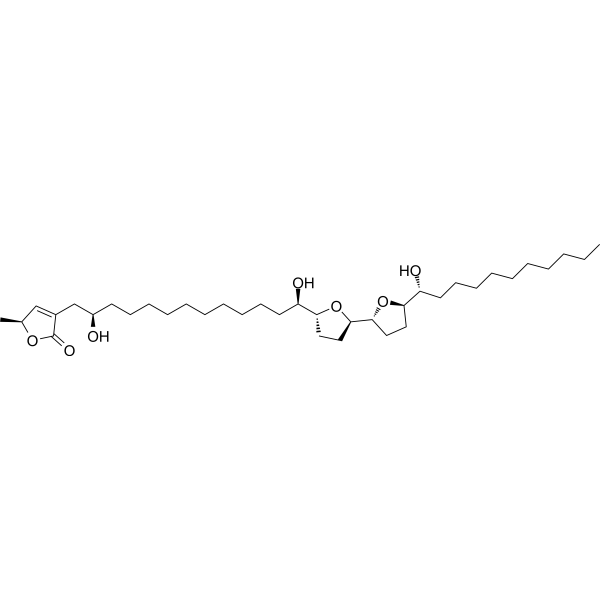
-
- HY-16137
-
|
Cephaloglycin
|
Bacterial
|
Infection
|
|
Cefaloglycin (Cephaloglycin) is an orally active nephrotoxic β-lactam cephalosporin antibiotic with antibacterial activity. Cefaloglycin is activity against Gram-Positive cocci other than enterococci. Cefaloglycin is toxic to mitochondrial substrate uptake and respiration .
|
-
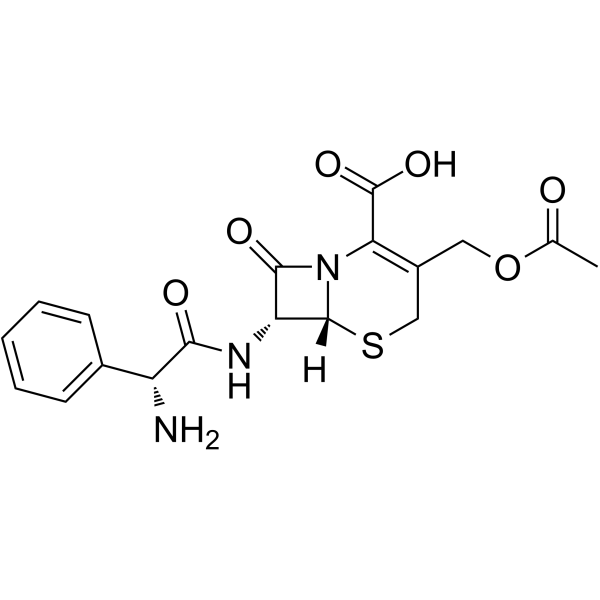
-
- HY-134318B
-
|
|
DNA/RNA Synthesis
|
Others
|
|
8-Azido-ADP (disodium) is a covalent-binding inhibitor of mitochondrial adenine nucleotide translocation. 8-Azido-ADP (disodium) causes irreversible inhibition of adenine nucleotide exchange in a light-dependent reaction. 8-Azido-ADP (disodium) inhibits the normal state 4 → 3 transitions of mitochondrial respiration induced by ADP . 8-Azido-ADP (disodium) is a click chemistry reagent, it contains an Azide group and can undergo copper-catalyzed azide-alkyne cycloaddition reaction (CuAAc) with molecules containing Alkyne groups. Strain-promoted alkyne-azide cycloaddition (SPAAC) can also occur with molecules containing DBCO or BCN groups.
|
-
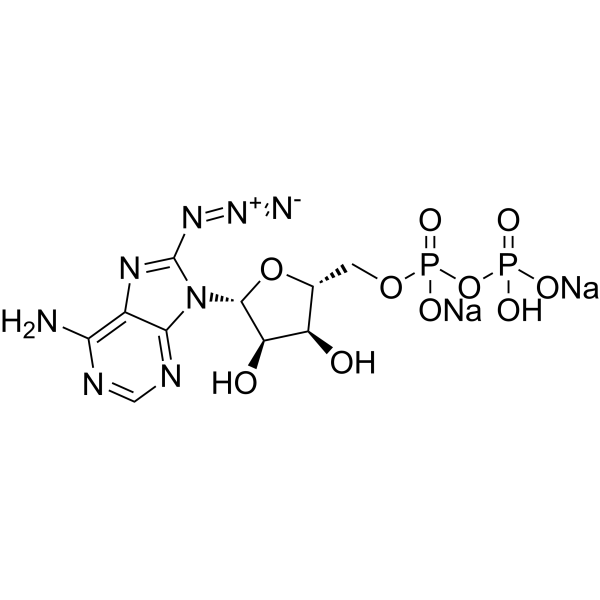
-
- HY-B0849
-
|
|
Fungal
Reactive Oxygen Species
Apoptosis
Bacterial
Phosphatase
|
Infection
|
|
Azoxystrobin is an orally active, broad-spectrum β-methoxyacrylate fungicide. Azoxystrobin inhibits mitochondrial respiration by binding to the Qo site of the cytochrome bc1 complex and inhibiting electron transfer. Azoxystrobin induces the production of reactive oxygen species (ROS) and induces cell apoptosis .
|
-

-
- HY-138559
-
|
|
Mitochondrial Metabolism
|
Neurological Disease
|
|
GW604714X is a potent inhibitor of mitochondrial respiration supported by pyruvate but not other substrates. GW604714X is a highly specific mitochondrial pyruvate carrier (MPC) inhibitor with a Ki <0.1 nM. GW604714X also inhibits L-lactate transport by the plasma membrane monocarboxylate transporter (MCT1), but at concentrations more than 4 orders of magnitude greater than the MPC .
|
-

-
- HY-151189
-
|
|
ROCK
|
Others
|
|
ROCK-IN-4 is a potent ROCK inhibitor maintaining NO releasing ability. ROCK-IN-4 reversibly depolymerizes F-actin, and suppresses mitochondrial respiration in human trabecular meshwork (HTM) cells. ROCK-IN-4 can be used for glaucoma or ocular hypertension research .
|
-
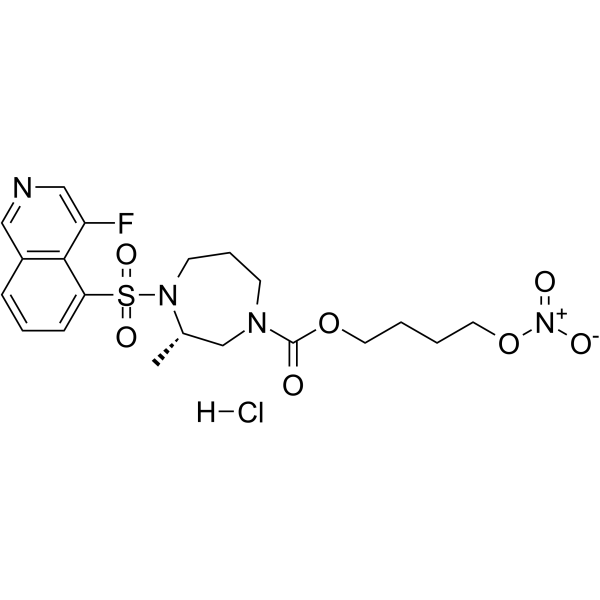
-
- HY-111475
-
|
|
Mitochondrial Metabolism
|
Cardiovascular Disease
|
|
Mitochondrial fusion promoter M1 is a mitochondrial dynamic modulator. Mitochondrial fusion promoter M1 preserves the mitochondrial function and promotes cellular respiration. Mitochondrial fusion promoter M1 alleviates cardiac and brain damage in rats with cardiac ischemia/reperfusion injury .
|
-

-
- HY-114410
-
|
|
Mitochondrial Metabolism
|
Cancer
|
|
CCI-006 is a selective inhibitor and chemosensitizer of MLL-rearranged leukemia cells, by inhibits mitochondrial respiration resulting in insurmountable mitochondrial depolarization and a pro-apoptotic unfolded protein response (UPR) in a subset of MLL-r leukemia cells .
|
-
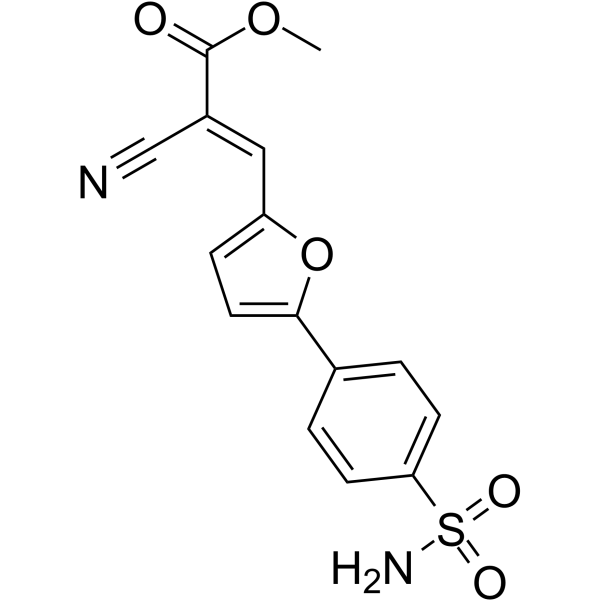
-
- HY-W032022
-
|
|
Biochemical Assay Reagents
|
Others
|
|
1-Hexanol, a primary alcohol, is a surfactant that can be employed in industrial processes to enhance interfacial properties . 1-Hexanol uncouples mitochondrial respiration by a non-protonophoric mechanism .
|
-
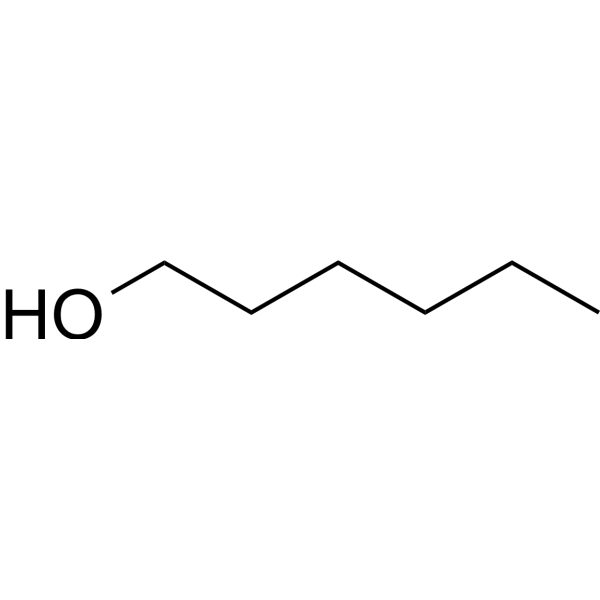
-
- HY-111321
-
-
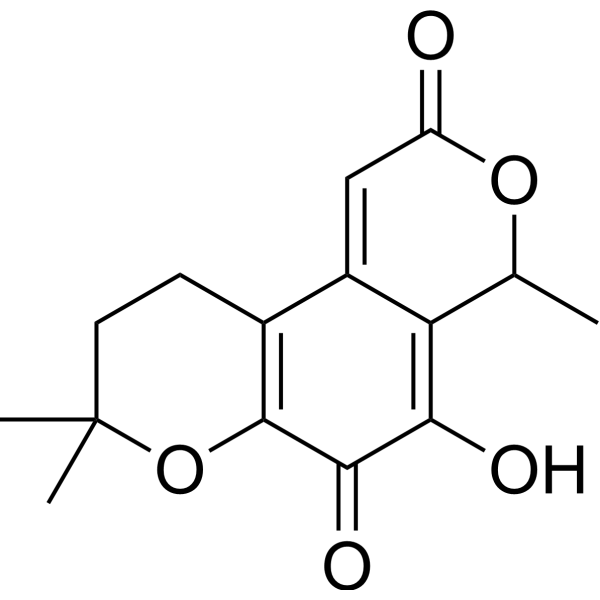
-
- HY-126222
-
|
|
Apoptosis
Mitochondrial Metabolism
|
Cancer
|
|
MitoTam bromide, hydrobromide, a Tamoxifen derivative , is an electron transport chain (ETC) inhibitor. MitoTam bromide, hydrobromide reduces mitochondrial membrane potential in senescent cells and affects mitochondrial morphology . MitoTam bromide, hydrobromide is an effective anticancer agent, suppresses respiratory complexes (CI-respiration) and disrupts respiratory supercomplexes (SCs) formation in breast cancer cells .
|
-

-
- HY-W082452S
-
|
|
Isotope-Labeled Compounds
|
Others
|
|
N-Boc-N-methoxy-N-methyl-L-phenyl-alaninamide-d5 is the deuterium labeled Picoxystrobin. Picoxystrobin is a primary strobilurin fungicide that is widely applied for plant disease control. Picoxystrobin inhibits mitochondrial respiration via blocking elect
|
-
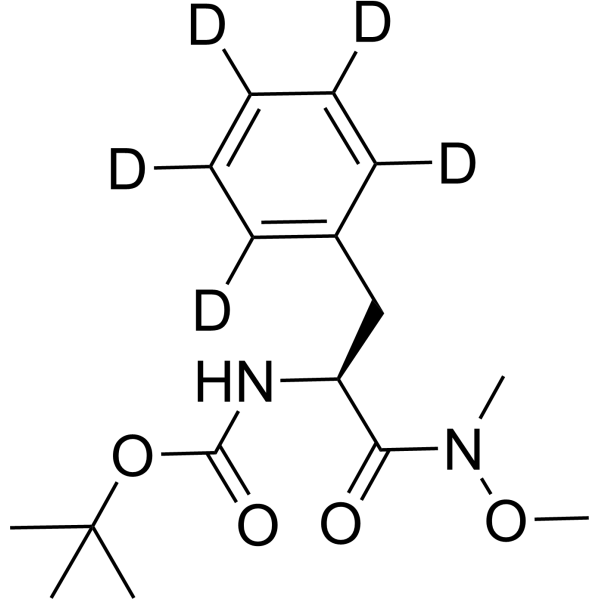
-
- HY-124726
-
|
|
Autophagy
|
Neurological Disease
Cancer
|
|
Aumitin is a diaminopyrimidine-based autophagy inhibitor which inhibits mitochondrial respiration by targeting complex I. Aumitin inhibits starvation- and rapamycin induced autophagy dose dependently with IC50s of 0.12 μM and 0.24 μM, respectively .
|
-
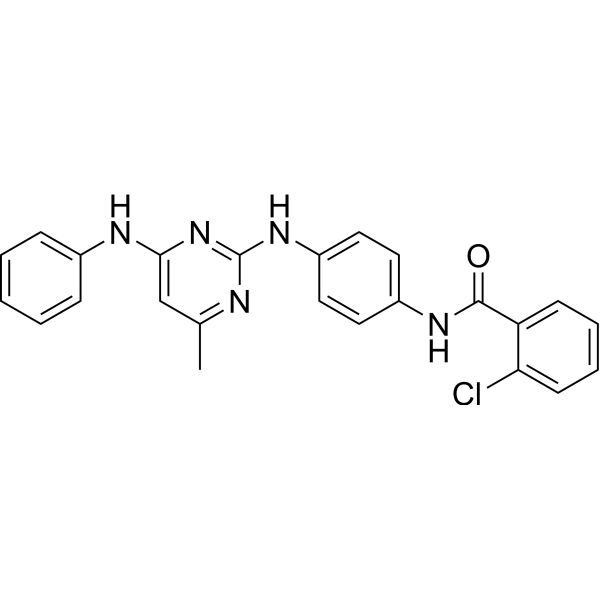
-
- HY-126222A
-
|
|
Apoptosis
Mitochondrial Metabolism
|
Cancer
|
|
MitoTam iodide, hydriodide is a Tamoxifen derivative , an electron transport chain (ETC) inhibitor, spreduces mitochondrial membrane potential in senescent cells and affects mitochondrial morphology .
MitoTam iodide, hydriodide is an effective anticancer agent, suppresses respiratory complexes (CI-respiration) and disrupts respiratory supercomplexes (SCs) formation in breast cancer cells . MitoTam iodide, hydriodide causes apoptosis .
|
-

-
- HY-155849
-
|
|
Pyruvate Kinase
|
Cancer
|
|
Pkm2-in-4 (compound 5C) is a selective inhibitor of PKM2 (IC50=0.35 μM), which regulates pyruvate-dependent respiration and induces mitochondrial H202 production rate and electron transport system coupling .
|
-
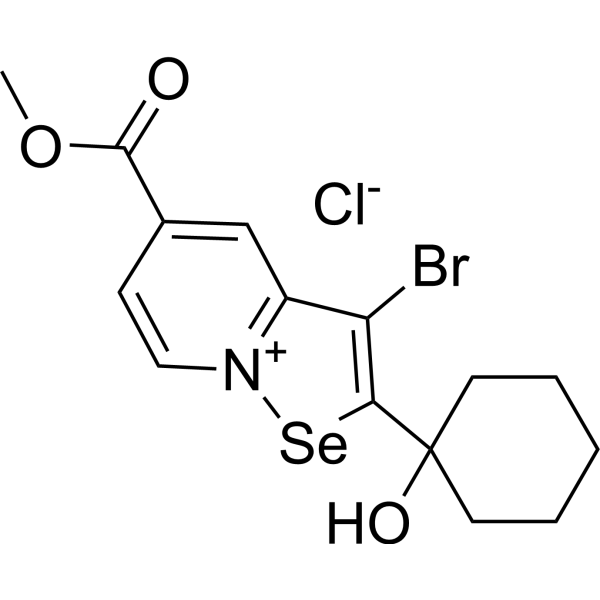
-
- HY-153813
-
|
|
p38 MAPK
Mitochondrial Metabolism
|
Others
|
|
Z16078526 induces endogenous Ucp1 expression, promotes p38 MAPK phosphorylation and lipolysis in primary mouse brown adipocytes. Z16078526 activates thermogenic gene expression and mitochondrial activity (uncoupled respiration) in mouse brown adipocytes. Z16078526 also stimulates thermogenesis in the mouse .
|
-
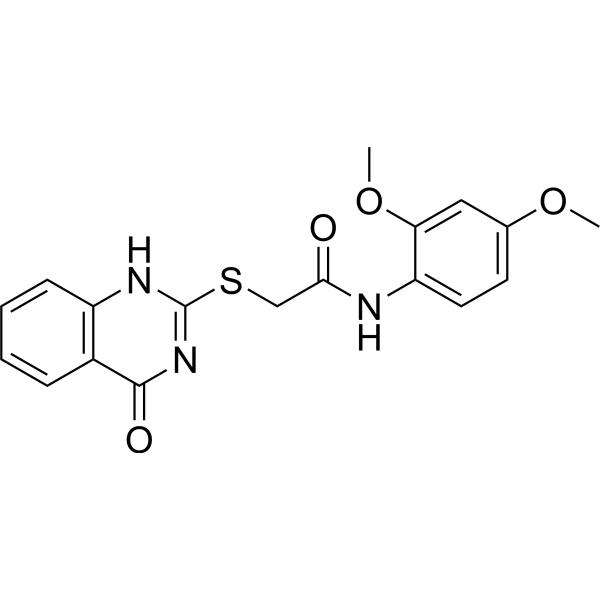
-
- HY-114936
-
|
AR-054
|
Bacterial
ADC Cytotoxin
Antibiotic
Mitochondrial Metabolism
|
Infection
Neurological Disease
Cancer
|
|
Piericidin A (AR-054) is a natural mitochondrial NADH-ubiquinone oxidoreductase (complex I) inhibitor. Piericidin A is a potent neurotoxin and inhibits mitochondrial respiration by disrupting the electron transport system through its action on NADH-ubiquinone reductase. Piericidin A is also a potential quorum-sensing inhibitor that suppresses the expression of the virulence genes of Erwinia carotovora subsp. atroseptica (Eca). Piericidin A is an ADC cytotoxin and has anti-bacterial, anticancer, insecticidal activity .
|
-
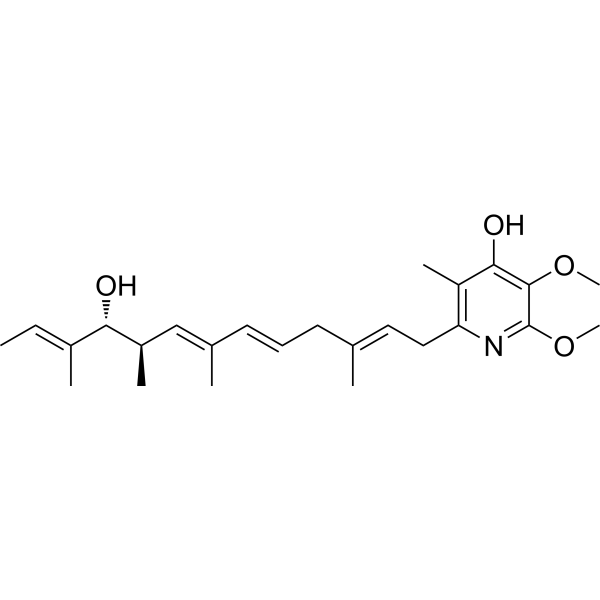
-
- HY-B0849S
-
|
|
Isotope-Labeled Compounds
Fungal
Reactive Oxygen Species
Apoptosis
|
Infection
|
|
Azoxystrobin-d4 is deuterium labeled Azoxystrobin. Azoxystrobin is a broad-spectrum β-methoxyacrylate fungicide. Azoxystrobin inhibits mitochondrial respiration by binding to the Qo site of the cytochrome bc1 complex and inhibiting electron transfer. Azoxystrobin induces the production of reactive oxygen species (ROS) and induces cell apoptosis.
|
-
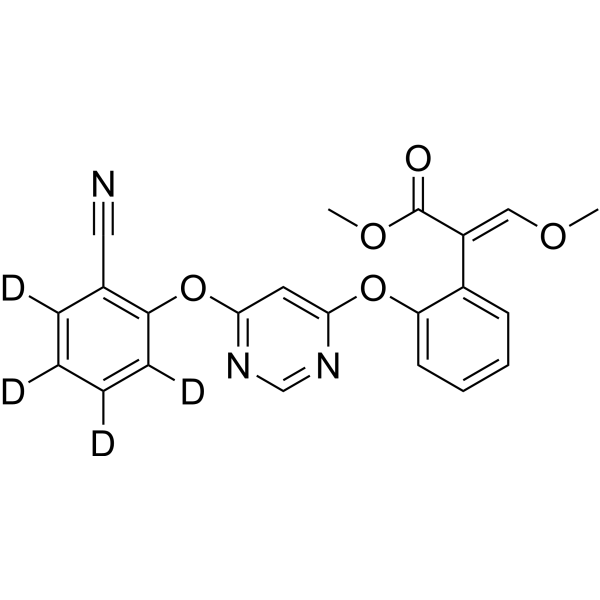
-
- HY-W032022S
-
|
|
Isotope-Labeled Compounds
|
Others
|
|
1-Hexanol-d13 is the deuterium labeled 1-Hexanol[1]. 1-Hexanol, a primary alcohol, is a surfactant that can be employed in industrial processes to enhance interfacial properties[2]. 1-Hexanol uncouples mitochondrial respiration by a non-protonophoric mechanism[3].
|
-
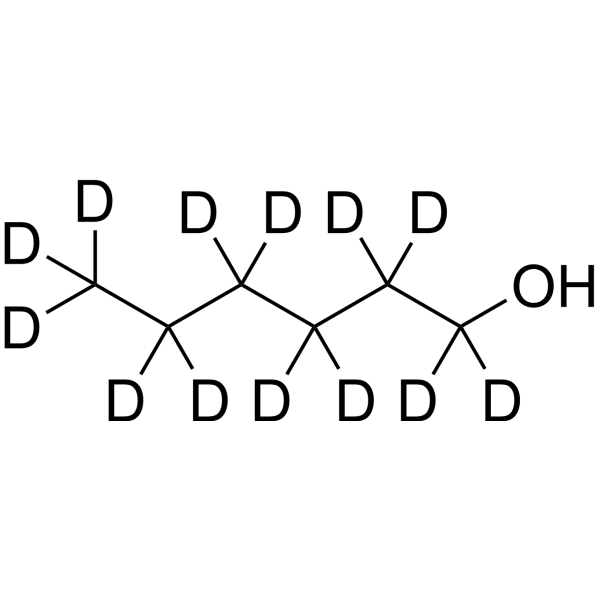
-
- HY-W032022S1
-
|
|
Isotope-Labeled Compounds
|
Others
|
|
1-Hexanol-d11 is the deuterium labeled 1-Hexanol[1]. 1-Hexanol, a primary alcohol, is a surfactant that can be employed in industrial processes to enhance interfacial properties[2]. 1-Hexanol uncouples mitochondrial respiration by a non-protonophoric mechanism[3].
|
-
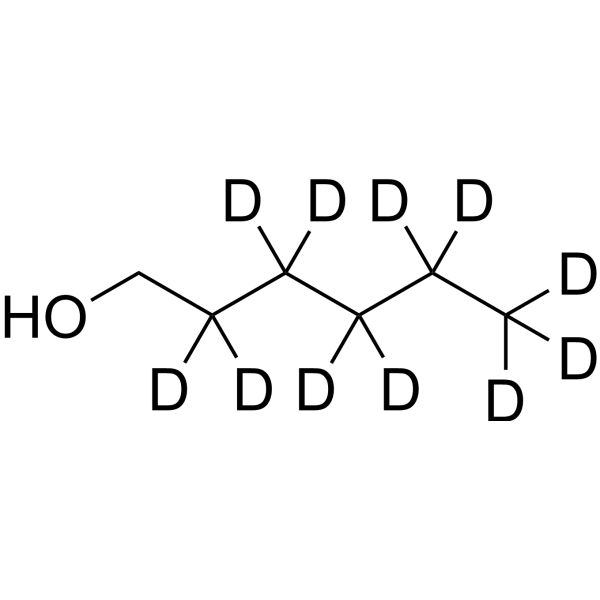
-
- HY-W032022S2
-
|
|
Isotope-Labeled Compounds
|
Others
|
|
1-Hexanol-d3 is the deuterium labeled 1-Hexanol[1]. 1-Hexanol, a primary alcohol, is a surfactant that can be employed in industrial processes to enhance interfacial properties[2]. 1-Hexanol uncouples mitochondrial respiration by a non-protonophoric mechanism[3].
|
-
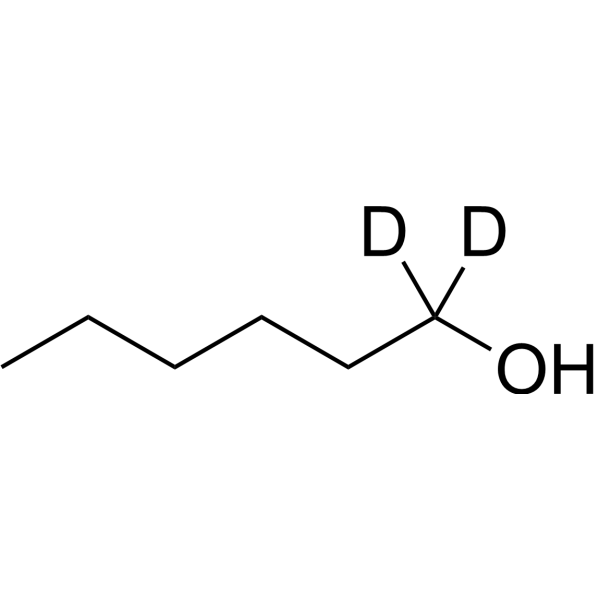
-
- HY-W032022S3
-
|
|
Isotope-Labeled Compounds
|
Others
|
|
1-Hexanol-d5 is the deuterium labeled 1-Hexanol[1]. 1-Hexanol, a primary alcohol, is a surfactant that can be employed in industrial processes to enhance interfacial properties[2]. 1-Hexanol uncouples mitochondrial respiration by a non-protonophoric mechanism[3].
|
-
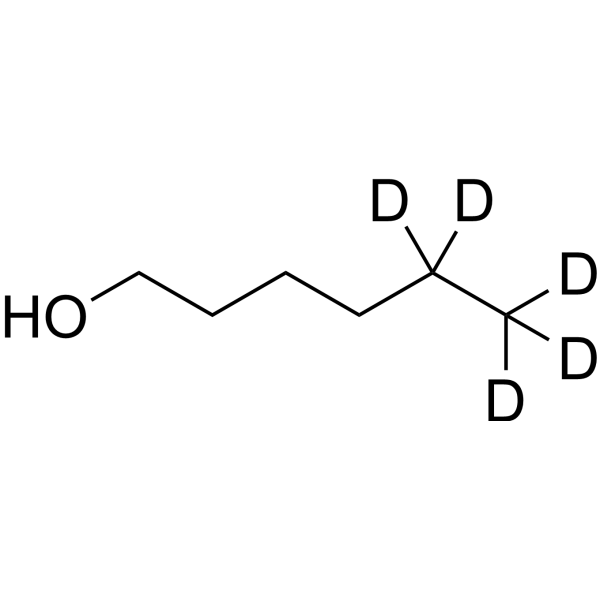
-
- HY-B0849S1
-
|
|
Fungal
Reactive Oxygen Species
Apoptosis
|
Infection
|
|
Azoxystrobin-d3 is deuterium labeled Azoxystrobin. Azoxystrobin is a broad-spectrum β-methoxyacrylate fungicide. Azoxystrobin inhibits mitochondrial respiration by binding to the Qo site of the cytochrome bc1 complex and inhibiting electron transfer. Azoxystrobin induces the production of reactive oxygen species (ROS) and induces cell apoptosis[1].
|
-
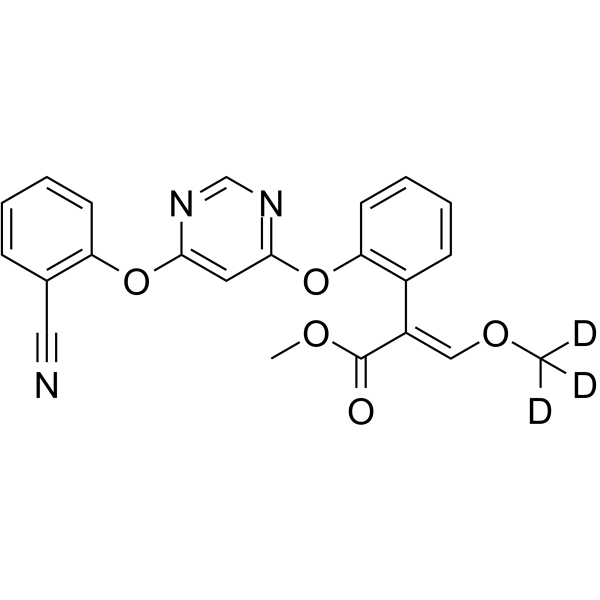
-
- HY-B0849R
-
|
|
Fungal
Reactive Oxygen Species
Apoptosis
|
Infection
|
|
Azoxystrobin (Standard) is the analytical standard of Azoxystrobin. This product is intended for research and analytical applications. Azoxystrobin is a broad-spectrum β-methoxyacrylate fungicide. Azoxystrobin inhibits mitochondrial respiration by binding to the Qo site of the cytochrome bc1 complex and inhibiting electron transfer. Azoxystrobin induces the production of reactive oxygen species (ROS) and induces cell apoptosis.
|
-
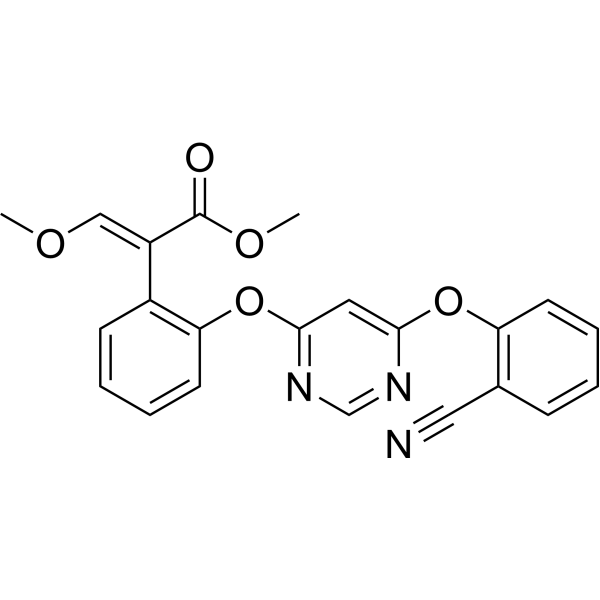
-
- HY-109804
-
|
|
Reactive Oxygen Species
|
Inflammation/Immunology
|
|
CORM-401 is an oxidant-sensitive CO-releasing molecule. CORM-401 induces NO increase in the regulation of endothelial calcium signalling. CORM-401 reduces TNF-α/CHX and H2O2-induced ROS production. CORM-401 uncouples mitochondrial respiration and inhibits glycolysis .
|
-
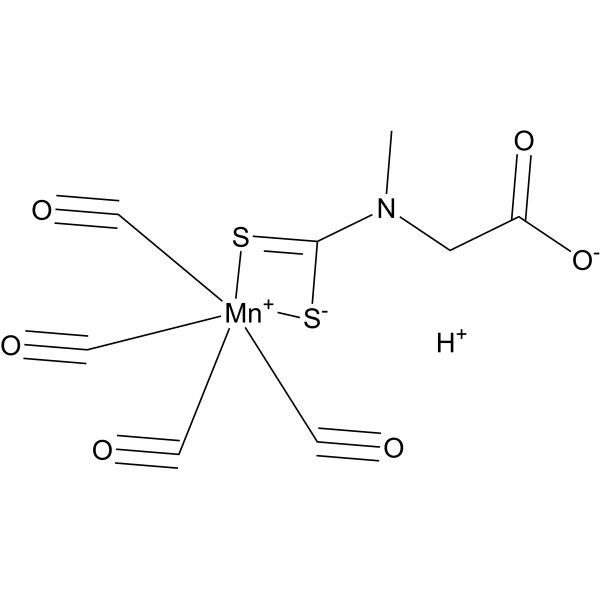
-
- HY-155673
-
|
|
Estrogen Receptor/ERR
|
Metabolic Disease
|
|
SLU-PP-332 is a pan-Estrogen Receptor/ERR agonist with EC50 values of 98, 230 and 430 nM for ERRα, ERRβ and ERRγ, respectively. SLUPP-332 enhances mitochondrial function and cellular respiration in skeletal muscle cell lines. SLU-PP-332 has the potential to study metabolic diseases as well as improve muscle function .
|
-
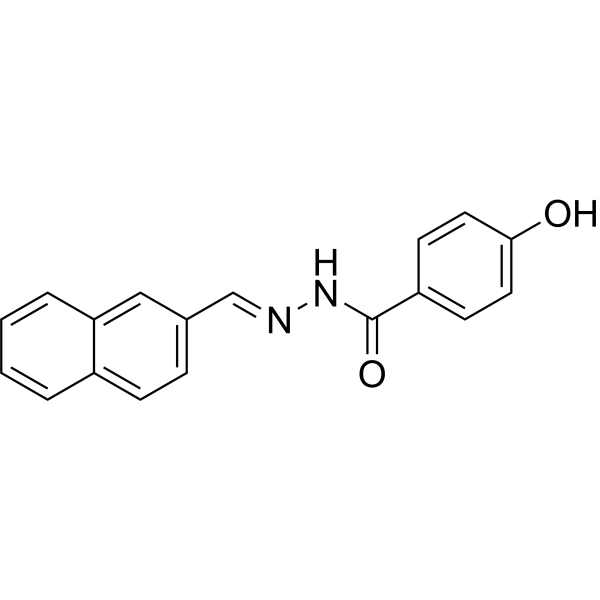
| Cat. No. |
Product Name |
Category |
Target |
Chemical Structure |
| Cat. No. |
Product Name |
Chemical Structure |
-
- HY-W032022S1
-
|
|
|
1-Hexanol-d11 is the deuterium labeled 1-Hexanol[1]. 1-Hexanol, a primary alcohol, is a surfactant that can be employed in industrial processes to enhance interfacial properties[2]. 1-Hexanol uncouples mitochondrial respiration by a non-protonophoric mechanism[3].
|
-

-
- HY-W082452S
-
|
|
|
N-Boc-N-methoxy-N-methyl-L-phenyl-alaninamide-d5 is the deuterium labeled Picoxystrobin. Picoxystrobin is a primary strobilurin fungicide that is widely applied for plant disease control. Picoxystrobin inhibits mitochondrial respiration via blocking elect
|
-

-
- HY-B0849S
-
|
|
|
Azoxystrobin-d4 is deuterium labeled Azoxystrobin. Azoxystrobin is a broad-spectrum β-methoxyacrylate fungicide. Azoxystrobin inhibits mitochondrial respiration by binding to the Qo site of the cytochrome bc1 complex and inhibiting electron transfer. Azoxystrobin induces the production of reactive oxygen species (ROS) and induces cell apoptosis.
|
-

-
- HY-W032022S
-
|
|
|
1-Hexanol-d13 is the deuterium labeled 1-Hexanol[1]. 1-Hexanol, a primary alcohol, is a surfactant that can be employed in industrial processes to enhance interfacial properties[2]. 1-Hexanol uncouples mitochondrial respiration by a non-protonophoric mechanism[3].
|
-

-
- HY-W032022S2
-
|
|
|
1-Hexanol-d3 is the deuterium labeled 1-Hexanol[1]. 1-Hexanol, a primary alcohol, is a surfactant that can be employed in industrial processes to enhance interfacial properties[2]. 1-Hexanol uncouples mitochondrial respiration by a non-protonophoric mechanism[3].
|
-

-
- HY-W032022S3
-
|
|
|
1-Hexanol-d5 is the deuterium labeled 1-Hexanol[1]. 1-Hexanol, a primary alcohol, is a surfactant that can be employed in industrial processes to enhance interfacial properties[2]. 1-Hexanol uncouples mitochondrial respiration by a non-protonophoric mechanism[3].
|
-

-
- HY-B0849S1
-
|
|
|
Azoxystrobin-d3 is deuterium labeled Azoxystrobin. Azoxystrobin is a broad-spectrum β-methoxyacrylate fungicide. Azoxystrobin inhibits mitochondrial respiration by binding to the Qo site of the cytochrome bc1 complex and inhibiting electron transfer. Azoxystrobin induces the production of reactive oxygen species (ROS) and induces cell apoptosis[1].
|
-

| Cat. No. |
Product Name |
|
Classification |
-
- HY-134318B
-
|
|
|
Azide
|
|
8-Azido-ADP (disodium) is a covalent-binding inhibitor of mitochondrial adenine nucleotide translocation. 8-Azido-ADP (disodium) causes irreversible inhibition of adenine nucleotide exchange in a light-dependent reaction. 8-Azido-ADP (disodium) inhibits the normal state 4 → 3 transitions of mitochondrial respiration induced by ADP . 8-Azido-ADP (disodium) is a click chemistry reagent, it contains an Azide group and can undergo copper-catalyzed azide-alkyne cycloaddition reaction (CuAAc) with molecules containing Alkyne groups. Strain-promoted alkyne-azide cycloaddition (SPAAC) can also occur with molecules containing DBCO or BCN groups.
|
Your information is safe with us. * Required Fields.
Inquiry Information
- Product Name:
- Cat. No.:
- Quantity:
- MCE Japan Authorized Agent:









































